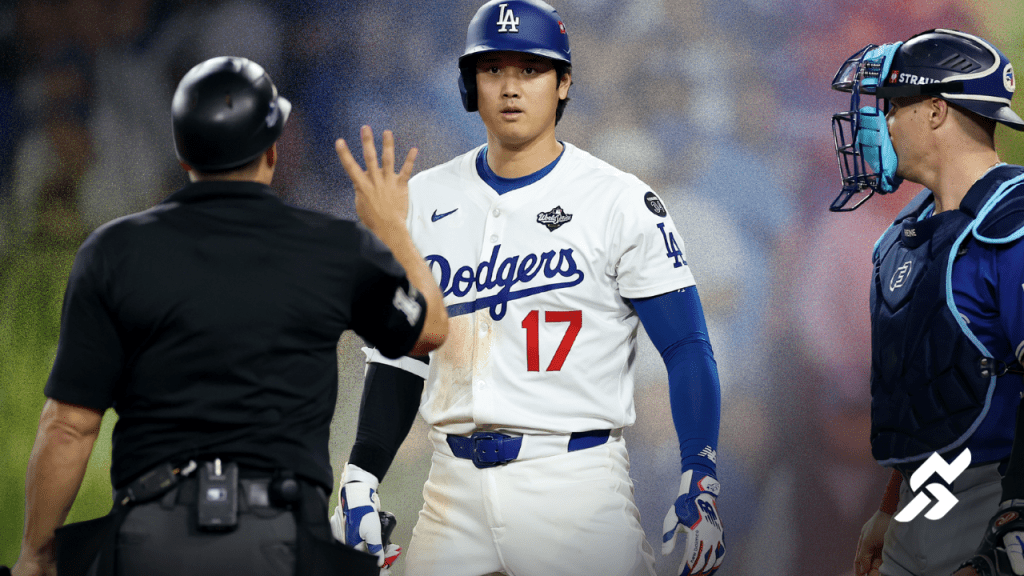The intentional walk. A strategic maneuver, a frustrating spectacle, and in the eyes of many, an outdated relic of baseball’s past. The recent World Series game featuring Shohei Ohtani and the Toronto Blue Jays has reignited the debate, prompting a serious question: Should MLB abolish the intentional walk?
For fans who shelled out considerable sums to witness top-tier baseball, watching a manager wave a generational talent like Ohtani to first base four times in a single game felt like a betrayal. This article delves into the core reasons why the intentional walk needs to go, exploring its impact on fan experience, competitive fairness, and the very spirit of the game. We’ll examine the arguments for and against its existence, ultimately advocating for a change that puts the bat back in the hands of the best players and delivers the excitement fans crave.
The Ohtani Debacle: A Case Study in Frustration
The sight of Shohei Ohtani being intentionally walked multiple times in a crucial World Series game sparked outrage among fans and analysts alike. As the best player on the planet, Ohtani’s presence at the plate is a major draw, a reason why people tune in and buy tickets. To see that potential excitement nullified by a simple wave of the manager’s hand felt like a letdown.
Dodgers manager Dave Roberts acknowledged the validity of fans’ frustration, stating, ‘That’s fair. That’s a fair take.’ He also admitted his bias, adding, ‘I would probably say I wish we could outlaw it because it would benefit the Dodgers.’
The Intentional Walk: A History and Explanation
Prior to the 2017 season, the intentional walk required a pitcher to throw four balls outside the strike zone. Now, it’s a simple signal from the manager. While this change was intended to speed up the game, it also removed any element of chance or skill involved in the process.
In other sports, there isn’t a parallel to this level of control. You can’t simply take the ball away from Patrick Mahomes or Connor McDavid. Even in basketball, intentionally fouling a star player still gives them a chance to score from the free-throw line. Baseball stands alone in its ability to completely neutralize a player without any contest.
It’s Not What Fans Want: The Issue of Fairness
Imagine paying top dollar to see a superstar like Ohtani or Aaron Judge, only to watch them trod to first base without swinging the bat. It’s a deflating experience that undermines the competitive spirit of the game. As the article highlights, ‘It’s not what paying customers want to see and it’s not inherently fair.’
Even when the intentional walk is used against other players, such as Barry Bonds, it is a frustrating experience. There is a better opportunity to see what the player can do when they have the opportunity to swing the bat.
It’s a Failed Strategy: The Ineffectiveness of the Intentional Walk
While the logic behind intentionally walking a dangerous hitter seems sound, the statistics suggest it’s not always effective. The San Francisco Giants, who witnessed Barry Bonds walked an astounding 2,558 times, noted that they scored 30% of the time when Bonds reached base via a walk.
Furthermore, as Freddie Freeman pointed out, ‘But that means Shohei’s on base, so that’s also good for the Dodgers.’ The intentional walk simply shifts the pressure to the next batter, who may also be a capable hitter. By keeping the lineup turning, the Dodgers have the opportunity to turn the tables on the Blue Jays.
The Blue Jays’ Perspective: Risk Mitigation or Overthinking?
Blue Jays manager John Schneider defended his decision to intentionally walk Ohtani, stating he’d rather have anyone else beat his team. However, this strategy ultimately backfired. Freeman, batting behind Ohtani, hit a walk-off homer in the 18th inning, proving that avoiding one player doesn’t guarantee success.
Schneider’s approach highlights the risk-averse nature of modern baseball management. While minimizing risk is important, sometimes it’s better to trust your pitcher and challenge the best hitter in the game. Avoiding the challenge can lead to unexpected consequences, as the Blue Jays learned the hard way.
A Rule Accommodation for Ohtani: A Precedent for Change
MLB has already made special rule accommodations for Shohei Ohtani, allowing him to remain in the lineup as a designated hitter even after he’s finished pitching. This acknowledges Ohtani’s unique talent and provides an advantage for the Dodgers. Perhaps it’s time for another rule change that further celebrates his abilities and enhances the viewing experience for fans.
Conclusion: Let the Best Hitters Hit
The intentional walk has outlived its usefulness in modern baseball. It’s a strategy that frustrates fans, undermines competitive fairness, and often proves ineffective. By abolishing the intentional walk, MLB can restore excitement to the game, encourage more strategic pitching, and put the spotlight back on the players who deserve it most.
As baseball continues to evolve, it’s crucial to prioritize fan engagement and the integrity of the sport. Eliminating the intentional walk is a step in the right direction, ensuring that fans get what they paid for: the chance to see the best hitters in the world compete at the highest level.

Leave a Reply